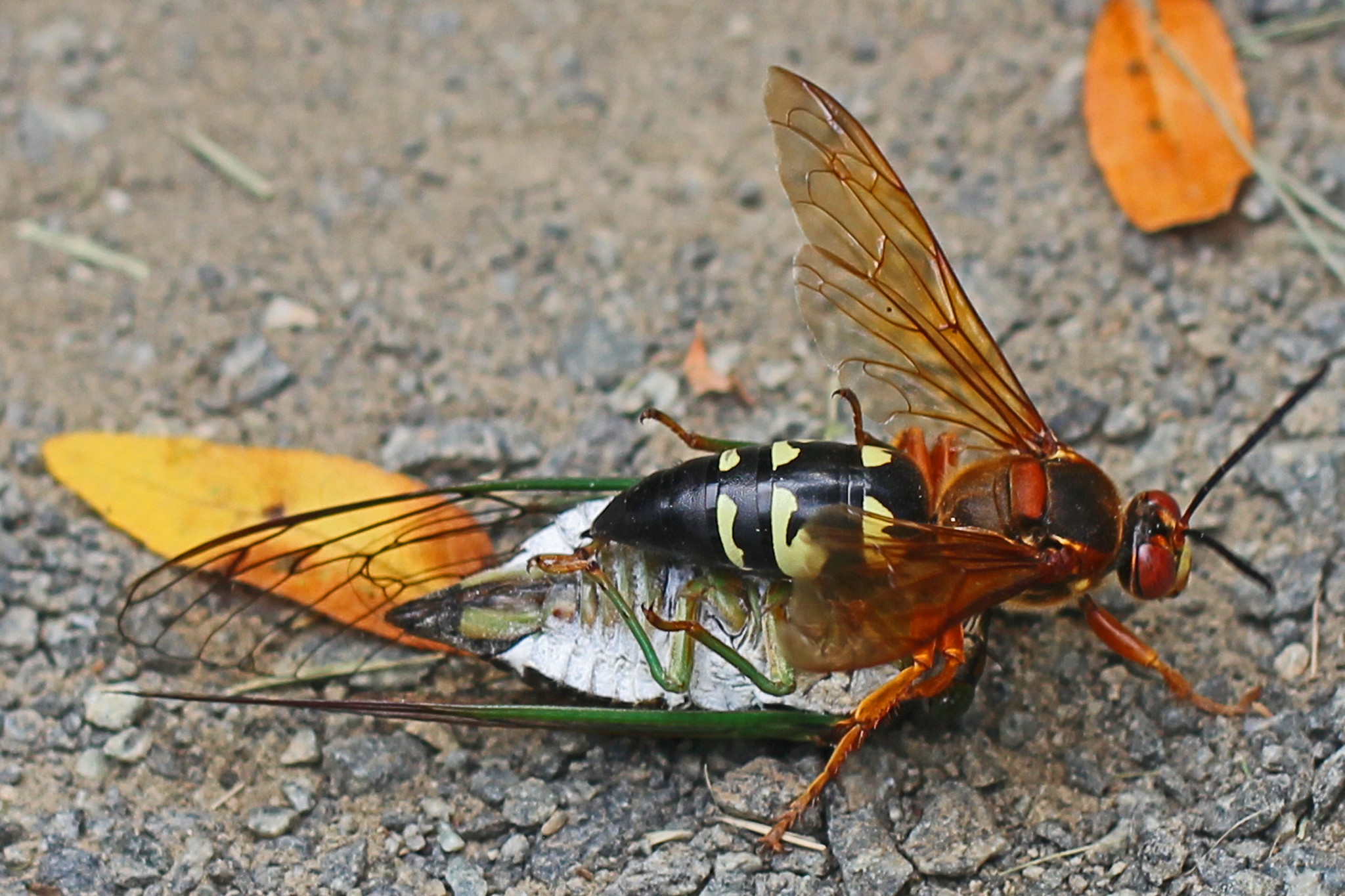Talk about a buzzkill
One of the largest North American wasps, this cicada killer wasp (found at the Hastings Sand Coulee SNA) is little threat to humans but an important control for cicada populations.
With the slow, hot days of late summer comes the loud buzz of cicadas, their long drone filling the air. These tiny creatures belt out enough decibels to be heard over the sound of lawnmowers, cars and other urban sounds. While this thrum is beloved by many, too much of any good thing can become a negative.
Adult female cicadas make slits in tree branches to lay eggs, weakening the branches. Cicada nymphs voraciously consume tree roots. This makes an overabundance of cicadas very destructive to many tree species.
Birds and other predators help keep the cicada population in check.
One lesser-known predator is the cicada killer wasp. The species found in Minnesota is the eastern cicada killer wasp (Sphecius speciosus), and if you see one you will know it these bold, black and yellow wasps are quite large! Females can be about 2 inches long, males are about half that. As intimidating as they appear, however, they are generally quite harmless to humans.
Male wasps (along with all male bees and ants) do not have a stinger. They have a pointed tip at the abdomen that they will try to stab with if threatened, but it can't pierce our skin. The females can sting but have little inclination to do so, and the sting is apparently much less potent than other wasps' or hornets'.
Killer cicada wasps are aptly named. Females sting cicadas with a paralyzing toxin and then hoist the cicada, which is more than twice their own body weight, through the air to their underground burrow in sandy or loose soils. They lay one egg on the cicada in a nest chamber at the end of the burrow. A second or sometimes even a third cicada body is often added because female larvae are larger than males and need more food, which is all the cicada is at this point. The chamber is then sealed and the process is repeated until multiple chambers are formed. The egg hatches in one or two days and the larvae consume the cicada meal for five to eight days until it reaches maturity. It then spins a cocoon and overwinters underground, pupating the following spring and hatching in July or August. After emerging from the ground, after cicadas begin to sing, adults live two to six weeks to mate and lay eggs, feeding on flower nectar and plant sap.
While these wasps may briefly congregate during mating season, they are primarily solitary unlike many of their social, hive-oriented relatives such as yellowjacket wasps.
These fascinating critters are beneficial insects and should not be harmed.
One place to find killer cicada wasps in the Twin Cities area is the Hastings Sand Coulee Scientific and Natural Area. Learn more about this special FMR restoration area and volunteer event site.
